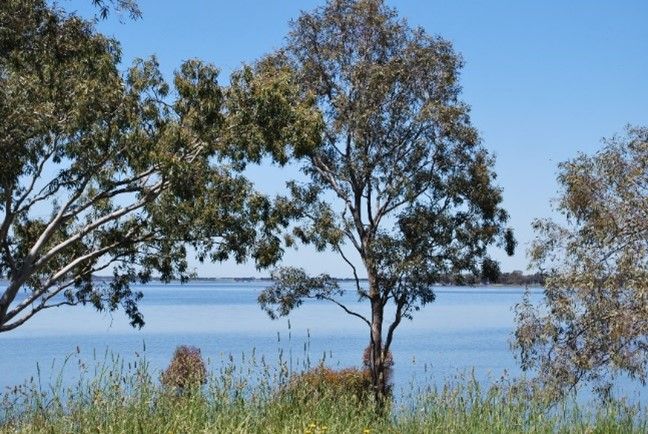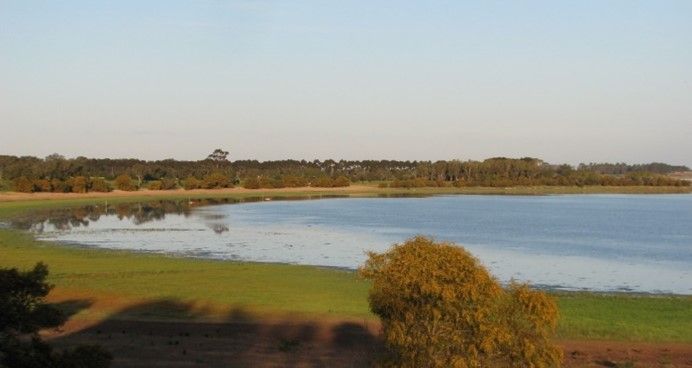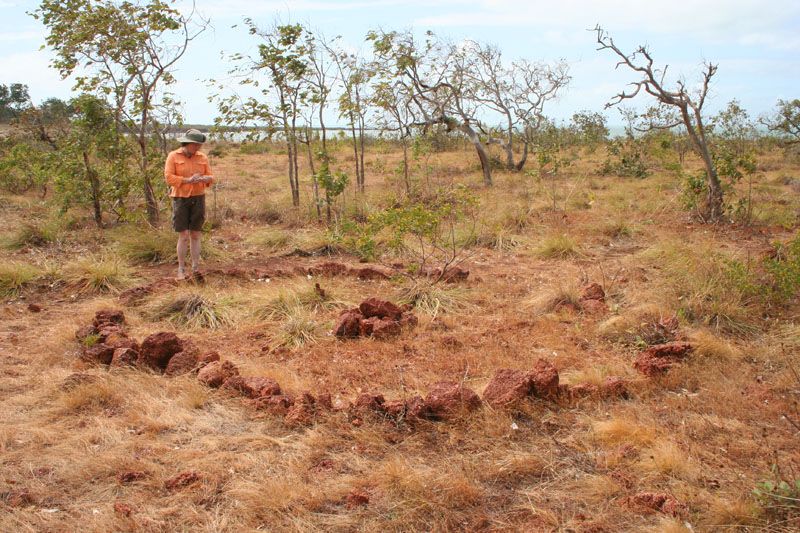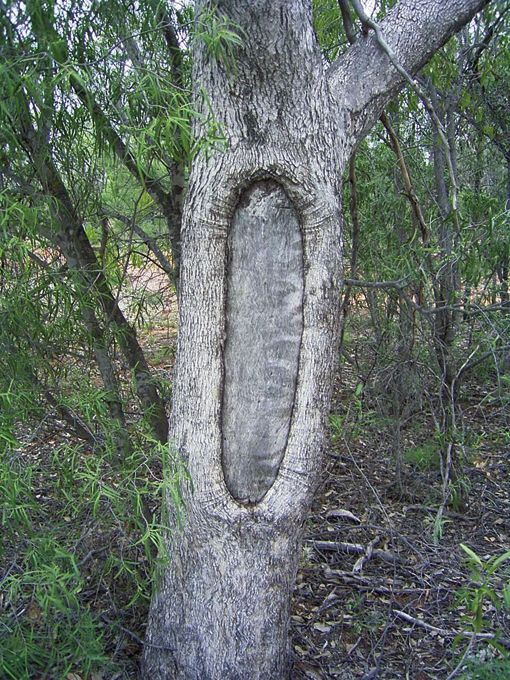Home/Curriculum resources/Reading and navigating through songlines/Case Study 2: The Lake Bolac Stone Arrangement, Victoria
Learning Areas:
English, Humanities and Social Sciences, Mathematics, The Arts
Year levels:
Level 3, Level 4

Case Study 2: The Lake Bolac Stone Arrangement, Victoria
This case study is a part of the Reading and navigating through songlines resource.
Lake Bolac. Photographer: Mattinbgn. Source: Wikimedia Commons. Used under licence: CC BY-SA 3.0.

Case Study 2: The Lake Bolac Stone Arrangement
The Lake Bolac stone arrangement is notable because it is widely understood to depict a large eel. Made up of a line of stones arranged in a crescent pattern, it is now the inspiration for the Lake Bolac Eel Festival, which very likely continues one of the purposes of this arrangement – to signal the site of a gathering place related to the life cycle and consumption of eels.
This was a meeting place for the Wada wurrung, Girai wurrung and Djab wurrung Peoples. We know that between 800 and 1,000 Aboriginal people gathered for ceremony at Lake Bolac according to an 1841 diary entry of colonial official, George Augustus Robinson, but the size of this gathering may have been larger prior to European arrival.
In recent times, the sacred site has been disturbed not once but twice - once in the construction of a freeway and more recently, through human error where a number of stones were moved. This further emphasises the importance of protections both through law and through common community understandings of the need to not interfere with Aboriginal stone arrangements or sites of significance.
Theories of possible purposes of this stone structure include the arrangement aligning with the shape of Lake Bolac itself, being used as an animal drive (a way to herd animals into a smaller space or area) or an astronomical indicator, perhaps the stones are an aquacultural fish trap system for when lake water levels were higher than they are now – making the harvesting of eel even easier.
We know from colonial records that, “on 1 April 1841, G.A. Robinson observed ovens and huge numbers of dead eel at Lake Bolac. The ovens were described as follows: on the top of the bank the natives had dug out round holes in the sand like a saucer” (Presland 1977, p.14).

Figure 1: Lake Bolac. Photographer: Melburnian. Source: Wikimedia Commons. Used under licence: CC BY 3.0.
What is being done to protect this area and modernise these areas?
Unfortunately, the Lake Bolac stone arrangement serves as something of a cautionary tale of why it is essential to protect Aboriginal stone arrangements and sites of significance. The stones were disrupted by the construction of a freeway a decade ago and more recently, a 60-metre section of the stones was removed, prompting legal action. The site has been on the Victorian Aboriginal Heritage Register since 1975 and is one of the most well-known stone arrangements in the state.
The site has now inspired the modern adoption of the Lake Bolac Eel Festival.

Related case studies within this resources:
Case Study 1: Bunya Nut Festival, Queensland
The Bunya Nut Festival is an illustration of navigation for ceremony and social interaction.

Case Study 3: Dampier Rock Art Precinct, Western Australia
The Dampier Rock Art Precinct is an illustration of navigation to a site of significance.

Case Study 4: The Wurrwurrwuy Makassan Stone Pictures, Northern Territory
The Wurrwurrwuy Makassan Stone Pictures is an illustration of navigation for trade.

Case Study 5: Scar Tree at Heide Yingabeal, Victoria
The Scar Tree at Heide Yingabeal is an illustration of markers to support navigation.